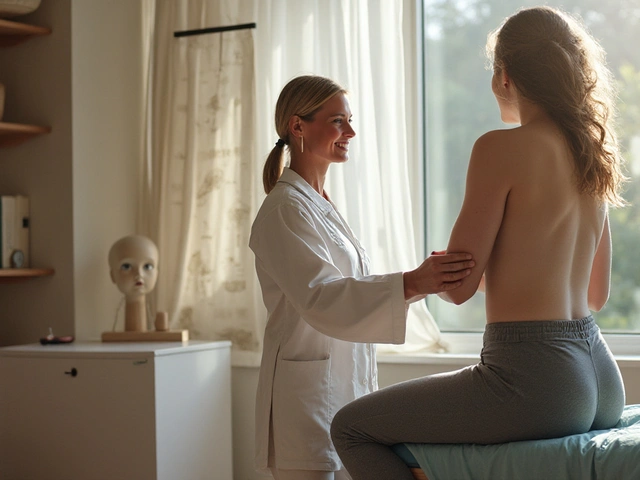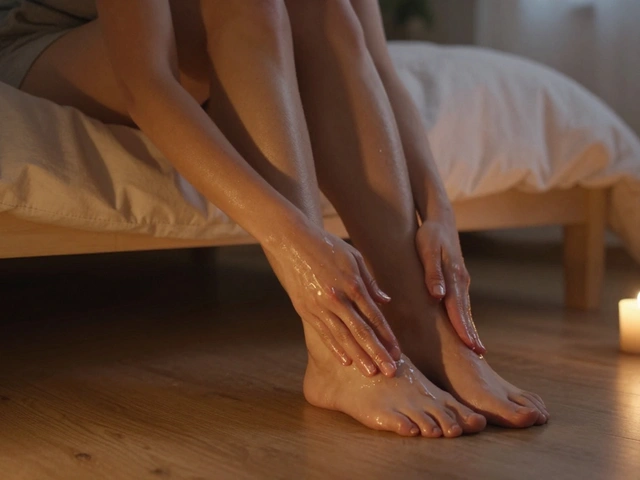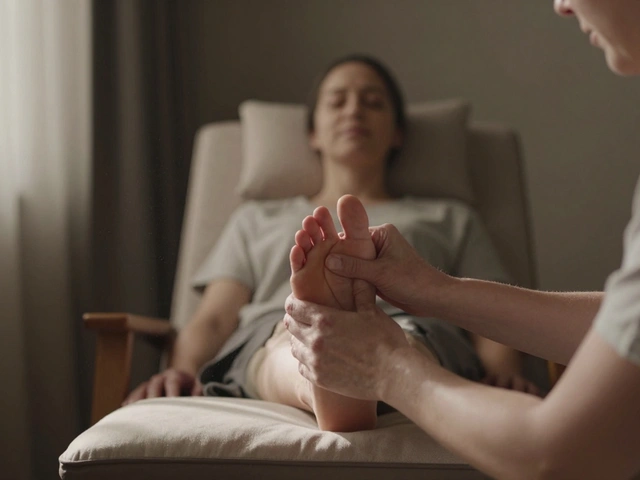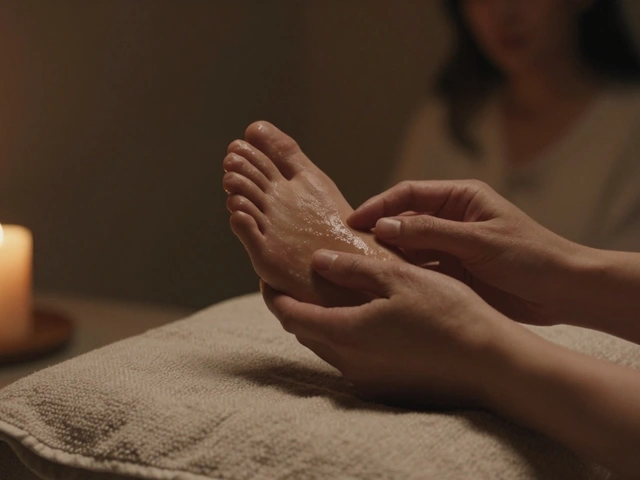Ever wondered why some people rave about Thai massage as if it's a life-changing experience? It isn’t just hype. There’s real substance behind the ancient art that’s survived for centuries—and exploded in popularity around the globe. Forget about lying motionless on a table while someone kneads your shoulders; a traditional Thai massage feels worlds apart. Picture yourself fully clothed, moving through a blend of stretches, pressure points, and rhythmic compressions. By the time it’s over, you’ll feel like someone hit the reset button on your whole body.
The Origins and Philosophy of Thai Massage
Thai massage didn’t just materialise out of thin air. Its roots stretch back over 2,500 years, making it one of the oldest healing systems still practiced today. People in Thailand call it Nuad Boran, which translates to “ancient healing touch.” The legend credits Jivaka Kumar Bhaccha, a physician to the Buddha, with developing the methods that became Thai massage. This healing art is baked into the daily fabric of Thai culture—passed down through families and practiced in temples, like the famous Wat Pho in Bangkok. You won’t find chakra charts hanging everywhere, but energy lines (called Sen lines) guide the therapist’s hands from feet to head.
At the core, Thai massage blends influences from Ayurvedic medicine, yoga, and traditional Chinese medicine. Instead of simply tackling muscle tension, it takes a broader view: how energy moves through your body, how your organs function, and even how your moods change. What makes it unique is its combination of acupressure and assisted yoga postures. These aren’t random stretches—a practitioner follows a flow designed to balance the body’s natural energy. The intention? To leave you feeling not just relaxed, but awake and recharged. That’s why you’ll see monks, athletes, and everyday locals alike seeking out Thai massage as part of their regular self-care routine.
This isn’t just old-school know-how. Researchers have found that traditional Thai massage reduces anxiety and lowers markers of inflammation in the body. In a 2022 study at Mahidol University, participants who received Thai massage twice a week for a month reported reduced pain and improved mobility, compared with those who only rested. Ancient wisdom meets modern science—and both seem to agree there’s something special going on.
What Really Happens During a Thai Massage Session
The first time I tried a Thai massage, I was surprised by how interactive it was—not a passive experience at all. You’ll often start by lying on a cushioned mat on the floor, wearing loose, comfy clothes (thankfully, no awkward towel moments!). Instead of just pressing on sore spots, the therapist will use their hands, thumbs, elbows, knees, and even feet. They move your arms, legs, and spine through a series of stretches that feel sort of like assisted yoga. Sometimes, you’ll be gently rocked side to side or have your limbs squeezed and compressed.
If you’re picturing a spa, turn down the lights—literally. Many places in Thailand offer a more down-to-earth vibe, sometimes with the scent of lemongrass breezing through the air. The aim is to create a tranquil ambience without the fuss. A typical session lasts anywhere from 60 minutes to two hours, but some people book longer treatments for extra-deep relaxation.
Wondering if there’s a specific sequence? Well, most therapists work from your feet upwards, following the body’s energy lines. You might notice pressure applied to precise points—the same ones used in acupuncture and reflexology. Expect joint mobilisation, rhythmic squeezing, and stretches that target tight hips and stubborn shoulders.
Here’s a breakdown of common moves you’ll experience:
- Palming and thumb-pressing along energy lines from the feet up
- Gentle twisting of your spine (with the therapist’s support—don’t worry, you won’t get bent out of shape!)
- Limb stretching to open up the hips, knees, and shoulders
- Rolling or rocking motions to relax the nervous system
- Deep breathing guided by your therapist to boost oxygen flow
Right after the session, people often say they feel taller, lighter, and somehow more “unlocked.” It’s not uncommon to hear joints pop gently during stretches—kind of like a reset for your posture. Some people even catch themselves feeling a bit emotional, as the release of tension brings unexpected relief.

Physical and Mental Benefits: What Science Says
Sure, Thai massage feels good, but what does it do on a deeper level? Studies have looked at how Thai massage stacks up against other therapies—and the results are more than just anecdotal. According to clinical research from Chulalongkorn University in 2021, participants reported a 35% reduction in chronic lower back pain after six weeks of regular sessions. It wasn’t just about muscles. Researchers tracked lower cortisol (the stress hormone), greater flexibility, and improved sleep patterns in people receiving ongoing treatment.
Here’s a quick snapshot of known benefits, backed by real data:
| Benefit | Study/Source | Result |
|---|---|---|
| Chronic pain relief | Chulalongkorn University (2021) | 35% reduction in pain over 6 weeks |
| Increased flexibility | Mahidol University (2022) | Measured 22% improvement in hip mobility |
| Stress reduction | Department of Psychiatry, Chiang Mai University (2020) | Significant drop in anxiety and cortisol |
| Reduced inflammation | Songklanagarind Hospital (2023) | Markers for inflammation lowered after 4 sessions |
If you’re into fitness or sports, Thai massage ranks high for recovery. The techniques help flush out lactic acid (the stuff that makes muscles ache after a hard run or gym session), boosts circulation, and speeds up healing from minor injuries. Therapists in Perth often work with local footy players or surfers who swear by it to keep their bodies feeling primed between games or after tough sessions in the waves.
But it’s not just a physical tune-up. Many regulars say the biggest payoff is mental clarity and better focus. The combination of deep pressure and guided breathing seems to pull you out of that post-midday fuzz, especially if you’re glued to screens all day. It’s a reset for both body and brain. Therapists have found that clients with anxiety, stress, or trouble sleeping walk away feeling more at ease, even after just one session.
The real kicker? There’s almost no downside if you’re healthy—just make sure you’re seeing someone experienced if you have any health issues or recent injuries.
What to Know Before You Book: Tips for Getting the Most from Thai Massage
So you’re ready to try Thai massage, but how do you make sure it’s the real deal—and that you get the best experience? I’ve tried plenty over the years, not just in Perth but in Bangkok (when travelling felt easy) and little beach towns up north. I’ve picked up tips that turn a “that was nice” session into a real mind-body game-changer.
- Check your therapist’s credentials. True practitioners train for hundreds of hours, often at places like Wat Pho or prestigious schools in Chiang Mai. If you’re in Australia, look for certificates in traditional Thai massage, not just “relaxation massage.”
- Arrive with an empty stomach. The stretches can get deep, and eating just before your session can leave you feeling sluggish—or worse, queasy. Same goes for heavy caffeine or alcohol.
- Wear loose, comfortable clothes. You’ll keep most or all of your clothes on, but make sure there’s plenty of stretch for those yoga-like moves. Skip jeans or anything with tight waistbands.
- Communicate openly. If something hurts or feels too intense, say so. A good therapist will adjust the pressure and never force your body into anything that feels wrong.
- Prepare for emotional releases. Sometimes tension isn’t just physical; it can bring up unexpected feelings. This is normal. Let yourself breathe through it—usually, you’ll walk out feeling lighter.
- Plan some downtime afterward. You may feel energised or a little spacey straight after, especially if it’s your first time. Don’t rush into a work meeting or drive home in heavy traffic immediately.
- Stay hydrated. Drink plenty of water after your session to help your body flush out toxins released during massage.
Feeling nervous? Start with a shorter session or let your therapist know you’re a newbie. They’ll guide you gently and explain what to expect, so there’s no guesswork. Don’t expect every Thai massage to be the same; every practitioner has their own touch, blend of stretches, and approach to pressure—so it’s worth trying a few to find your favourite. If you ever find yourself in Thailand, treat yourself to a session at a temple; there’s nothing like hearing chanting monks in the background as you unwind.
Even Luna, my golden retriever, could sense something different when I came home post-massage—probably the relaxed vibe or the way I moved with fewer aches. Thai massage isn’t just about quick fixes or pampering. It’s real self-care—the kind that resets you, body and mind, for whatever life throws at you next.









